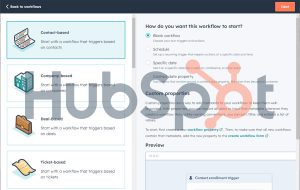Interactive Content Marketing: Leveraging Gamification and Quizzes for Higher Engagement

Interactive content marketing has revolutionized the digital landscape, offering a dynamic approach to engaging audiences and driving meaningful interactions. Through the strategic utilization of gamification and quizzes, brands can elevate their digital marketing strategies to foster higher levels of engagement and interaction with their target audience.
As the significance of interactive content continues to grow in the realm of digital marketing, leveraging gamification and quizzes has become increasingly pivotal for brands seeking to create immersive and personalized experiences for their audience. This blog post delves into the compelling impact of interactive content marketing and explores the power of gamification and quizzes as invaluable tools for enhancing engagement and fostering lasting connections with consumers.
Understanding Interactive Content Marketing
Interactive content marketing involves the use of engaging, click-worthy materials to capture the attention of the audience and encourage active participation. This type of content goes beyond the conventional, passive consumption of information, enabling the audience to interact with it, thus creating a two-way communication channel.
Defining Interactive Content Marketing
Interactive content marketing stands out from traditional content marketing because it entices the audience to engage actively rather than simply consuming information. It injects an element of fun, curiosity, and interactivity into the communication process. Rather than being a passive recipient, the audience becomes an active participant, which can enhance the overall brand experience.
Benefits of Interactive Content Marketing
- Increased Engagement: Interactive content prompts users to spend more time interacting with a brand, leading to increased brand exposure and awareness.
- Enhanced Brand Interaction: It fosters a deeper and more meaningful interaction between the audience and the brand, leading to stronger connections and loyalty.
- Higher Conversion Rates: By providing a more engaging and personalized experience, interactive content can lead to higher conversion rates as it guides the audience through the buyer’s journey more effectively.
Interactive content marketing appeals to the innate human desire for interaction and play. It provides an opportunity for brands to stand out, connect with their audience, and drive meaningful actions.
The Power of Gamification in Marketing
Businesses are constantly striving to capture and maintain the attention of their target audience. One effective strategy that has gained widespread popularity is gamification. This innovative approach involves incorporating game-like elements into non-game contexts to drive engagement and enhance user experience.
Introduction to Gamification
Gamification is the integration of game mechanics and design techniques in non-game settings, such as marketing campaigns, to motivate participation, promote loyalty, and drive desired behaviors. By tapping into the fundamental psychological principles that underlie motivation and learning, gamification appeals to individuals’ intrinsic desires for achievement, recognition, and rewards.
Examples of Successful Gamification Campaigns
Several brands have successfully leveraged gamification to elevate their marketing efforts. For instance, Starbucks implemented a gamified loyalty program that rewards customers for making purchases and engaging with the brand. This initiative increased customer retention and incentivized repeat visits. Another notable example is Nike, which launched the Nike+ app, integrating gamified elements to motivate users to achieve their fitness goals and fostering a sense of community among athletes.
Implementing Gamification in Content Marketing
Businesses can incorporate gamification into their content marketing strategies by introducing interactive quizzes, challenges, or virtual rewards systems. By infusing their content with gamified elements, brands can captivate their audience, encourage active participation, and create memorable experiences. Whether through immersive storytelling or interactive product demonstrations, integrating gamification can amplify engagement and leave a lasting impression on consumers.
Leveraging Quizzes for Audience Engagement
Engaging your audience through interactive content such as quizzes can significantly impact your marketing strategy. Quizzes are known for their ability to captivate and entertain users, making them a powerful tool for driving engagement and generating leads.
The Appeal of Quizzes in Content Marketing
Quizzes have a unique appeal due to their interactive and personalized nature. They tap into the audience’s desire for entertainment and self-discovery, making them highly shareable and potentially viral. Moreover, quizzes offer an opportunity to collect valuable user data, providing insights into consumer preferences and behavior for targeted marketing efforts.
Creating Effective Quiz Content
When creating quiz content, it’s essential to focus on relevance and engagement. Tailoring quizzes to align with the interests and preferences of your target audience is key to maximizing their impact. Personalization can be achieved through tailored questions, results, and insights that resonate with the user, fostering a deeper connection with your brand.
Promoting Quizzes for Marketing Objectives
Promoting quizzes across digital channels can amplify their reach and effectiveness. Leveraging social media, email marketing, and website integration can broaden the quiz’s exposure and encourage participation. Beyond engagement, quizzes can serve as a vehicle for brand awareness, lead generation, and gathering valuable customer insights, serving multiple marketing objectives simultaneously.
Measuring Success and ROI of Interactive Content Marketing
Measuring the success and return on investment (ROI) of interactive content marketing is crucial for assessing the effectiveness of your strategies and campaigns. By tracking the right key performance indicators (KPIs) and calculating the ROI for gamification and quiz campaigns, you can gain valuable insights into their impact and optimize future activities.
Key Performance Indicators (KPIs) for Interactive Content
When evaluating the effectiveness of interactive content marketing, it’s essential to consider various metrics that can provide valuable insights into audience engagement and interaction. Some key performance indicators to focus on include:
- Engagement Rates: Measure the level of audience interaction with the interactive content, such as the number of clicks, shares, and comments.
- Time Spent on Content: Assess how much time users spend engaging with the interactive elements, indicating the level of interest and involvement.
- Lead Generation: Track the number of leads generated through interactive content, including form submissions, sign-ups, and downloads.
- Conversion Metrics: Analyze the conversion rates resulting from interactive content, such as the number of sales, subscriptions, or other desired actions.
By consistently monitoring these KPIs, you can evaluate the impact of your interactive content on audience engagement and its contribution to your marketing goals.
Calculating ROI for Gamification and Quiz Campaigns
Determining the return on investment for gamification and quiz-based marketing initiatives involves assessing the costs associated with these strategies and their resulting business outcomes. Here are some methods to consider when evaluating the ROI:
- Cost per Engagement: Calculate the expenses incurred for each user engagement with the gamified or quiz-based content, providing insights into the cost-effectiveness of these interactions.
- Customer Acquisition Cost: Measure the resources needed to acquire each new customer through gamification and quizzes, allowing you to compare the acquisition efficiency across different marketing approaches.
- Revenue Attribution: Determine the revenue directly attributed to the interactive content campaigns, enabling a clear understanding of their impact on sales and overall business performance.
By analyzing the ROI of gamification and quiz campaigns, you can make informed decisions about resource allocation and optimization to maximize the effectiveness of your interactive content marketing strategies.
Best Practices and Case Studies
Interactive content marketing, specifically leveraging gamification and quizzes, is an increasingly popular strategy for boosting audience engagement. Below, we’ll explore best practices for implementing interactive content strategies and delve into case studies of successful interactive content campaigns.
Best Practices for Implementing Interactive Content Strategies
When integrating gamification and quizzes into your marketing efforts, it’s essential to align these interactive strategies with your overall brand messaging and goals. Here are some actionable tips for businesses looking to implement interactive content:
- Define Clear Objectives: Start by outlining the specific goals you aim to achieve with interactive content. Whether it’s increasing brand awareness, driving website traffic, or boosting lead generation, clarity on objectives is crucial.
- Know Your Audience: Understanding your target audience’s preferences, interests, and pain points is pivotal. Tailor your interactive content to resonate with their needs and preferences for better engagement.
- Seamless Integration: Integrate gamification and quizzes seamlessly into your existing content strategy and marketing channels. Consistency across all touchpoints helps reinforce your brand message.
- Analyze and Iterate: Regularly analyze performance metrics and user engagement data to track the effectiveness of your interactive content. Use these insights to refine and iterate on your strategies.
Case Studies of Successful Interactive Content Campaigns
Real-world examples of companies that have reaped remarkable results from interactive content marketing can provide valuable insights. Here are a few case studies highlighting successful implementation:
- BuzzFeed’s Quiz Engagement: BuzzFeed’s playful and personality-driven quizzes have captivated audiences, driving high levels of social media engagement and website traffic. Their approach showcases how interactive quizzes can align with audience interests and preferences.
- Nike Run Club: Nike’s gamified fitness app, Nike Run Club, has successfully combined gamification with community engagement. The app’s interactive challenges, leaderboards, and rewards system have fostered a dedicated user community and amplified brand loyalty.
- Duolingo’s Gamified Language Learning: Duolingo, a language-learning platform, gamifies the language acquisition process through interactive exercises, progress tracking, and skill challenges. This approach has significantly enhanced user retention and motivation to learn.
These case studies demonstrate the transformative impact of effectively integrating gamification and quizzes into marketing strategies, showcasing how brands have elevated engagement and achieved notable results.
Takeaways
Interactive content marketing is rapidly becoming a game-changer in driving higher engagement and brand performance. The potential of gamification and quizzes in captivating audiences and fostering meaningful interactions cannot be overlooked. As digital landscapes continue to evolve, leveraging interactive content strategies will be pivotal in creating seamless and thrilling brand experiences. By embarking on this quest and embracing the power of interactive content, businesses can unravel new opportunities for growth and audience connection. It’s time to harness the forceful potential of gamification and quizzes to propel your brand into the fast-paced world of interactive content marketing.











